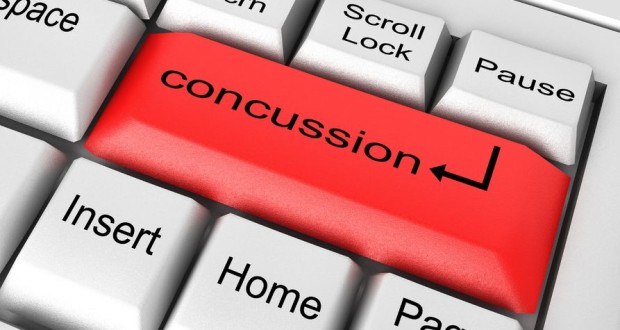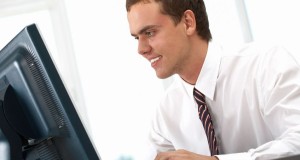Regardless of where you happen to live, there are bound to be a fair number of sports fans residing nearby. Sports are an important part of cultures the world over, although the popularity of various sports varies depends on location. In the United States, many would agree that football owns the title of the most popular sporting activity; this would help explain why the issue of football-related concussions gets so much attention. While concussions are certainly a serious problem in the realm of sports, the possible introduction of new diagnostic tests may help limit the impact of this injury.
Concussions by Sport
As one may expect, concussions are a relatively frequent occurrence in contact sports. Aside from football, this injury is also unfortunately common in both hockey and rugby. What may surprise you is that soccer and lacrosse players also suffer their fair share of concussions. In 2013, a panel assembled by the National Academy of Sciences released a report detailing the concussion rates of high school athletes. Their findings are shown in the table below (rates are based on concussions per every 10,000 “athletic exposures,” with each exposure representing either a practice or a game):
| Sport | Boys | Girls |
| Football | 11.2 | NA |
| Lacrosse | 6.9 | 5.2 |
| Soccer | 4.2 | 6.7 |
| Wrestling | 6.2 | N/A |
| Basketball | 2.8 | 5.6 |
| Field Hockey | N/A | 4.2 |
| Softball | N/A | 1.6 |
| Baseball | 1.2 | N/A |
Compounding this problem is that concussions are grossly underreported. According to the American College of Sports medicine, a stunning 85 percent of all sports related concussions go undiagnosed. One reason why this figure is so high is that some concussions cause only subtle symptoms, causing coaches and trainers to misjudge the severity of the player’s injury.
Checking the Blood
Thanks to a team of Swedish researchers, sports teams may soon have a new tool for diagnosing concussions. This group developed a possible new concussion test after studying Swedish professional hockey players, all of whom had suffered this injury during the 2012-2013 season. The study was published online in the journal JAMA Neurology in March 2014.
The researchers found concussion victims had elevated levels of tau protein in their blood. Furthermore, by regularly checking a patient’s tau readings, the research team was able to make reasonably accurate predictions about the longevity of each player’s symptoms. In addition to allowing patients to know the severity of their injury, this new test provides a diagnosis in as little as an hour after the concussion has occurred.
This isn’t the only test that relies on blood drawings to diagnose concussions. About two months before the Swedish researchers announced their findings, a joint US and German study found this injury may increase the blood levels of another type of protein. This research team noted that S100B proteins were far more prevalent in athletes’ blood samples following a concussion.
The study tracked a total of forty six ice hockey, football, soccer, and basketball players. Blood samples were taken from the participants using a common finger-stick blood test. When compared with samples taken at the beginning of the study, the athletes’ S100B levels rose by an average of 81 percent after a concussion. Twenty two of the volunteers suffered concussions during the study, and had their S100B levels checked within three hours after sustaining this injury. For these subjects, the research team found that a S100B increase of 45 percent or greater was “nearly diagnostic” of a concussion injury.
The King-Devick Test
In February 2014, a team of American researchers reported that many of the undiagnosed concussions suffered by athletes could be spotted with a combination of simple visual tests. This recommended group of exams included the King-Devick test, a test in which athletes recite lines of single-digit numbers off of index cards. A total of three cards are used for the test, which gets somewhat more challenging as the athlete progresses through it.
The research team monitored a total of 217 student-athletes from the University of Florida’s men’s football team, women’s soccer team and women’s lacrosse team. At the beginning of each team’s season, the participants were required to undergo a series of concussion tests; this was used to determine their normal scores on these exams. Thirty athletes experienced their first concussion during the study, and were subsequently given the same group of tests after reporting their injury.
Most of the athletes who suffered a concussion performed noticeably worse when retaking the King-Devick test; 79 percent of these subjects needed more time to recite the cards’ numbers. The concussed athletes also underwent the Balance Error Scoring System (BESS) and Standardized Assessment of Concussion (SAC) tests. This approach proved to be highly successful; when used together, these three tests were able to diagnose 100 percent of the concussions sustained by the subjects. The ultimate goal of this research team is to craft a standardized combination of concussion tests, which could be used for both youth sports and professional sporting leagues.
Athletes in a wide range of sports face the risk of concussion, a problem that is made worse by a poor rate of diagnosis. Though concussions will always be a part of sports, new testing methods may prevent many athletes from putting themselves at risk of further injury.
 Natural Knowledge 24/7 Educate yourself with nutrition, health and fitness knowledge.
Natural Knowledge 24/7 Educate yourself with nutrition, health and fitness knowledge.






